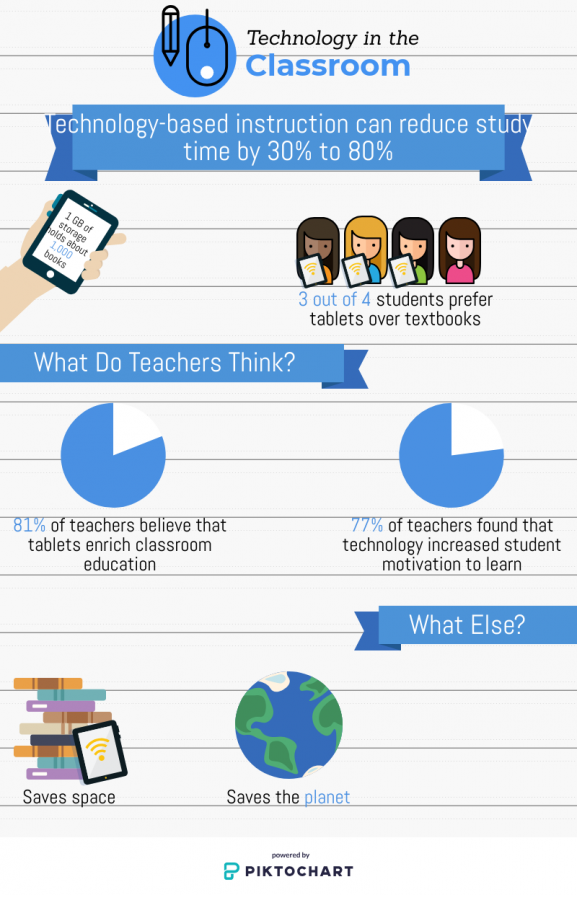It’s time for a digital evolution
May 30, 2018
eBooks and similar devices have risen in popularity in the last decade. However, many Americans still prefer the printed word over eBooks available on Kindles and other devices. Perhaps, for many of us, the aesthetic and simplicity is why paper books are still preferred. Nevertheless, the popularity of eBooks is a powerful trend that cannot be denied, and a stronger transition to using eBooks inside and outside of the classroom will have benefits for everyone involved.
Each year, classrooms across the nation utilize hundreds of books to educate their students. However, these books need to be replaced when possibly lost or damaged. The books would also have to be replaced over time anyway since they would become outdated. Schools across the country could easily go through hundreds of books each year.
According to the Omega Institute for Holistic Studies, the energy, water, and raw materials needed to make a single e-reader is equal to about 40-50 books. In terms of the effect on the climate, the emissions created by a single e-reader are equal to roughly 100 books. Schools of any size can easily exceed that amount of books each academic year, meaning that using digital in the classroom would have no more of an effect on the environment than using printed books would.
Saving the environment is a great reason to transition to digital, but it can also help save space. Schools everywhere need clunky bookshelves or carts to transport books, and sometimes whole storage rooms just to store sizable textbooks for students. But, tablets usually have 64 Gigabytes of storage. Well, what exactly does 64GB mean in terms of storage? Considering that on average, just 1GB can hold up to 1,000 books, tablets have more than enough capacity for all of a student’s needs.
But not only are tablets beneficial for the environment and for storage purposes, they’re beneficial for the students using them as well. When you can store thousands of books and assignments on one tablet, there’s more room to store other supplies and less money spent on bookshelves and carts to transport them from classroom to classroom.
And diversifying the classroom with digital learning is a change students want to see. On average, 3 out of 4 students prefer tablets over textbooks. Also, technology based instruction/learning can reduce the time needed for students to learn material by 30%-80%, according to the U.S. Department of Education and several studies by the National Training and Simulation Association.
This is a change teachers want to see in the classroom as well. According to a survey done by PBS, 81% of K-12 teachers believe that tablets enrich classroom education, and 77% of teachers found that technology increases student motivation to learn. With results like these, technology being introduced into the classroom will be a more interesting and engaging experience for students and teachers alike.




